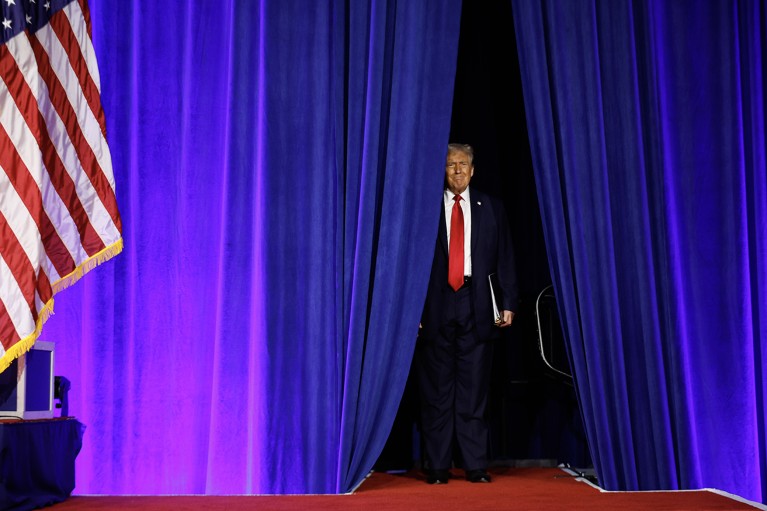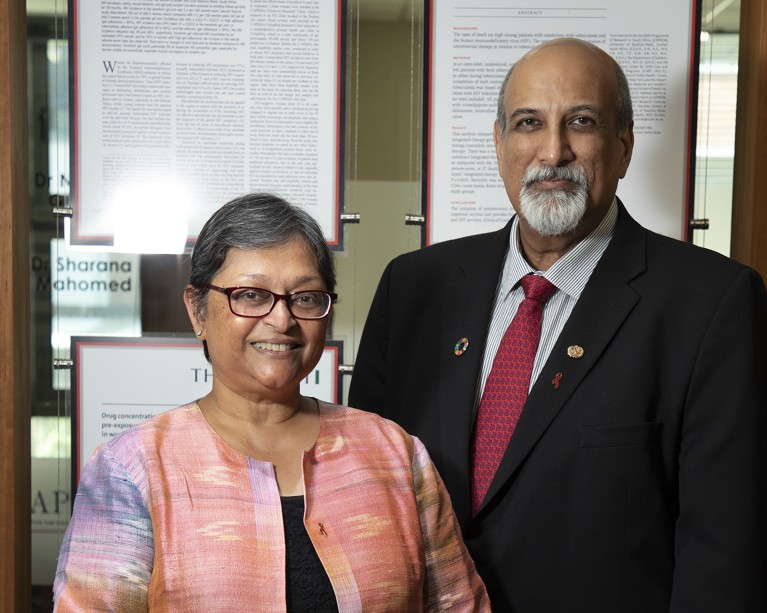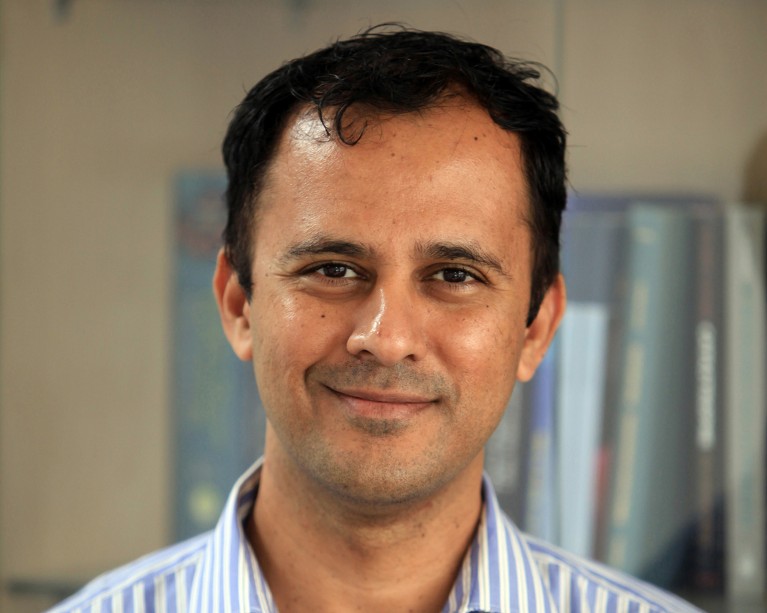
Donald Trump will take office on 20 January 2025.Credit: Chip Somodevilla/Getty
The re-election of Donald Trump as US president raises the prospect of big changes in US science, in terms of policy, funding and research. Nature asked six life scientists which priorities they’d like to see the administration focus on once Trump takes office in January next year.
AMANDER CLARK: Support education and reproductive care

Amander Clark implores Donald Trump to not dismantle the Department of Education.Credit: Don Liebig
Policy promises that president-elect Donald Trump made on his campaign trail stand to affect my professional life greatly — both as a professor at a public university and a principal investigator of a stem-cell laboratory. Now that the election is over, I am eager to learn which of those promises will come to fruition.
On the topic of education, I would urge Trump to not dismantle the Department of Education, as he has proposed. Instead, he should consider ways to enable students to attend university without going into debt — for instance, expanding funding for federal Pell grants, which are awarded to students in financial need. At the University of California, Los Angeles, where I work, we are committed to supporting first-generation college students and under-represented populations to provide them with the tools that are needed for success.
How the world will weather Trump’s withdrawal from global agreements
On science funding, I would implore the incoming president to raise funding for the National Institutes of Health (NIH) to a level that is consistent with the cost of doing science. After the last increase to the NIH budget in 2023, funding levels were 1.8% less than they were 20 years ago, when adjusted for inflation (see go.nature.com/3uvk5rr). Asking scientists to do more with less stifles creativity and poses a threat to the United States’ position as a world leader in biomedical research and innovation.
And, finally, on reproductive health and science, I urge Trump to support basic research. For too long, federal policies have restricted the ability of scientists to develop technologies that can improve fertility care, and to research ways to expand contraceptive choices, eliminate reproductive diseases and promote healthy reproductive ageing. As a result, individuals and their families remain burdened by unaffordable and inaccessible reproductive treatments, including in vitro fertilization (IVF).
In October, Trump recognized the value and importance of IVF to millions of Americans. I hope he will prioritize policies that will expand access to reproductive care and IVF and guarantee that this care is available for all.
ERIC TOPOL: Embrace medical AI

Eric Topol hopes that the incoming administration can provide funding for artificial-intelligence technology to help transform US health care.Credit: Scripps Research
Health care in the United States is remarkably inefficient and is plagued by millions of serious diagnostic errors each year. It has a lack of clinicians, pervasive inequities and the worst outcomes of any rich country for life expectancy and maternal and infant mortality.
Yet, we are on the brink of a seismic shift. Soon, it will be possible to use multimodal artificial intelligence (AI) to integrate all of a person’s data into one model — their electronic health record, laboratory tests, genome, social determinants of health, environmental exposures and more. The incoming Trump administration should provide financial backing for this technology, to accelerate AI’s transformation of US health care.
Scientists must hold President Trump to account with courage and unity
Unimodal AI, which analyses just one data type, has already been shown to significantly improve the accuracy with which physicians can interpret medical data, such as scans and pathology samples (E. J. Topol Nature Med. 25, 44–56; 2019). It can also substantially reduce the time that physicians need to spend on administrative work — such as dealing with insurance companies and note taking — so that they have more time to focus on patient engagement and care.
Multimodal AI models, which integrate several data types, have the potential to do much more. For instance, it’s hoped that they will enable more-accurate diagnoses. These tools will use technologies such as digital twins — virtual models of a person — to optimize treatments and outcomes. They will be capable of personalized medical forecasting, helping to prevent age-related diseases. These models might also reduce the need for hospital stays by enabling people to be monitored remotely.
The opportunities that lie ahead are extraordinary — improved efficiency, productivity, accuracy and outcomes and hugely reduced health-care costs. Still, more testing in real-world medical settings is needed. This clinical research is essential not only to validate AI models and fulfil regulatory requirements, but also to work out how multimodal AI can be used in ways that preserve an individual’s privacy and security, avoid bias and reduce health inequities. The government should make such work a priority.
HANK GREELY: Protect patients

Hank Greely is concerned that Donald Trump’s proposed budget cuts could decimate biomedical research.Credit: Eleanor Greely
I work on ethical, legal and social issues arising from the biosciences. The Trump administration’s top priority in this area should be to reassure people that the federal government will continue to support bioscience research, while maintaining the regulations needed to avoid exploitation of — and harm to — consumers and people receiving care. Uncertainty about what is to come, fed by statements such as Robert F. Kennedy Jr’s message that the “FDA’s war on public health is about to end,” can cause great damage even if threatened actions are not implemented. It can demoralize those who seek to improve public health, encourage people to retire or change careers and devastate public confidence in scientifically proven medical and public-health measures.
‘We need to be ready for a new world’: scientists globally react to Trump election
I have three main concerns about the incoming administration’s effects on bioscience and medicine.
First, some people in its coalition could attempt to ban or restrict some useful things that they consider to be immoral — including fetal tissue research, embryo research, discarding of IVF embryos, preimplantation genetic testing to select healthier embryos, interstate transportation of abortion pills and more.
Second, the administration might decide to protect company profits over the interests of people receiving medical care and consumers, and as a consequence it could gut regulations that protect people by preventing the sale of harmful or ineffective drugs, medical devices, nutritional supplements and a broad range of other unproven practices. The administration has the power not only to change an array of laws and regulations, but also to cripple the agencies, such as the Food and Drug Administration (FDA), that enforce them.
Third, it could decimate biomedical research if Trump’s administration really makes huge cuts in the federal budget — even if those cuts fall short of the US$2 trillion that Elon Musk says could be slashed. This would mean a slowdown in the research of life-improving and life-saving innovations — at least in the United States — not immediately, but inevitably, and soon. US health statistics are already bad enough; the new president shouldn’t act to make them worse. I will be (pleasantly) shocked if the incoming administration avoids that result.
SALIM S. ABDOOL KARIM & QUARRAISHA ABDOOL KARIM: Prepare for the next pandemic

Quarraisha Abdool Karim and Salim S. Abdool Karim urge Trump to fund pandemic prevention.Credit: Elana Schilz
The world has seen first hand how pandemics can affect livelihoods and derail even the best-laid economic plans. In our view, three current epidemics have pandemic potential: AIDS, mpox and antimicrobial-resistant organisms. Respiratory pathogens such as influenza, along with coronaviruses and resurgent, vaccine-preventable measles, are also cause for concern, as highlighted by the World Health Organization (WHO; see go.nature.com/4fvcj22).
Combating these pandemic threats will require a worldwide effort, in which the United States should have a leading role. We urge the incoming Trump administration to invest in pandemic prevention, preparedness and response, in the United States and globally.
What Trump’s election win could mean for AI, climate and health
First, the administration should provide more funding to the WHO, especially its Health Emergencies Programme. This would help the WHO to undertake effective pathogen surveillance around the world, generate information about possible future pandemics and deploy teams that can respond to emerging pandemic threats across the world — a key line of defence.
Second, it should support the US Office of Pandemic Preparedness and Response Policy, which was established in 2023 to advise the president and ensure that the United States can respond to a pandemic threat effectively. In practice, this means giving the office the necessary funding, authority and autonomy to develop evidence-based plans.
Third, the administration should ensure that the US President’s Emergency Plan for AIDS Relief (PEPFAR) and the Global Fund to Fight AIDS, Tuberculosis and Malaria are financially supported in their aim of ending AIDS as a public-health threat by 2030 — one of the United Nations’ Sustainable Development Goals. George W. Bush’s administration demonstrated bold leadership in creating PEPFAR in 2003. The programme needs secure support up to 2030, at least, to build on its global gains and complete its mission.
The incoming administration has articulated bold economic plans — but these could be at risk if a pandemic emerges. The best time to stop a pandemic is before it becomes one.
RAMANAN LAXMINARAYAN: Be smarter with antibiotics

Ramanan Laxminarayan advocates for improving access to effective antibiotics.Credit: Ramanan Laxminarayan
In Trump’s first presidency, much progress was made in biomedical sciences. NIH funding grew by nearly one-third in nominal terms, for instance — I don’t see funding decreasing significantly in the coming years.
And consider Operation Warp Speed. This public–private partnership, initiated in May 2020, incentivized pharmaceutical companies to take risks to expedite the development of vaccines, therapeutics and diagnostics to fight COVID-19.
The issue of antimicrobial resistance is particularly close to my heart, owing to my work with the One Health Trust, which is a public-health organization that addresses the interconnected world of humans, animals and environmental health. In my view, the first Trump administration gave this issue no more or less attention than the preceding or succeeding Democratic administrations.
This time around, improving access to effective antibiotics — both in the United States and globally — should be the single biggest priority for the incoming administration.
Drug-resistant pathogens don’t respect country borders. So it is in the United States’ best interests to ensure that, around the world, antibiotics are used only when appropriate. A programme on the scale of PEPFAR could improve diagnostics, surveillance of antibiotic-resistant microbes and guidance around antibiotic use in low- and lower-middle-income countries in Africa and Asia. Funding for the development of AI and other digital tools could enhance the usability of point-of-care diagnostics, and ensure that the correct antibiotics are used in the correct situations and in the best ways.
Financing access to antibiotics globally could help small US biotechnology companies that make these drugs to survive and thrive. This, in turn, will benefit people in the United States who desperately need new antibiotics, because the companies will have more money available for drug development.
We sometimes — incorrectly — equate impact with spending. For less than US$1 billion dollars a year, the US government could transform access to existing and new antibiotics worldwide.






